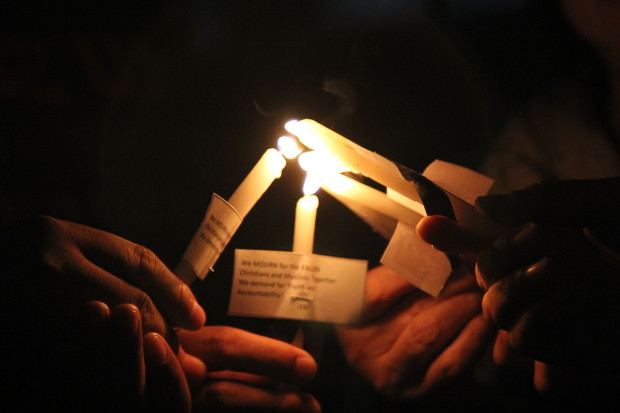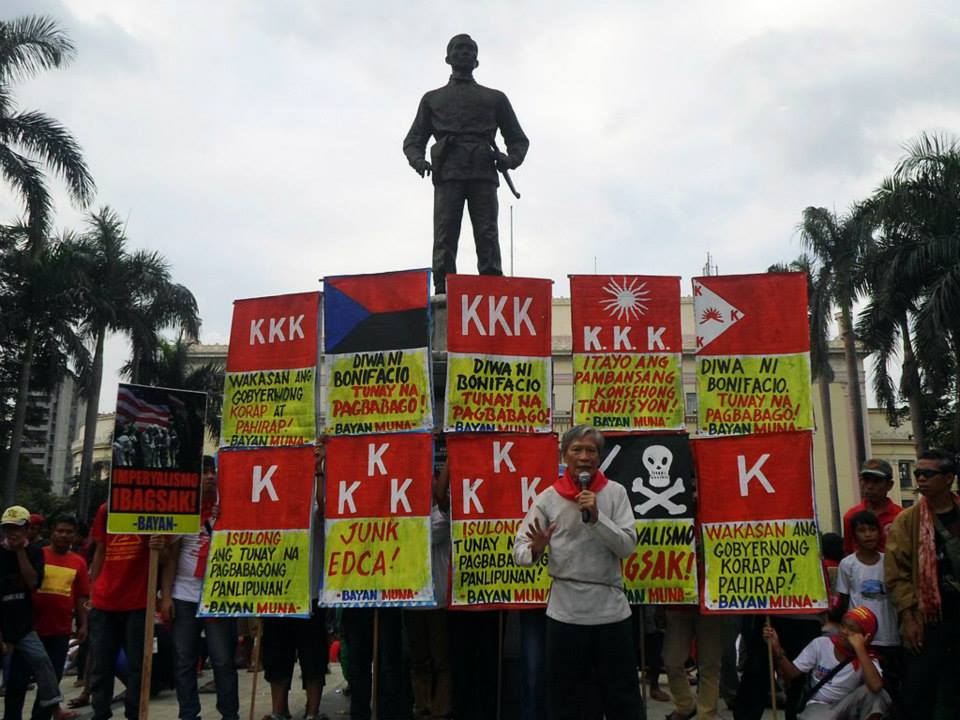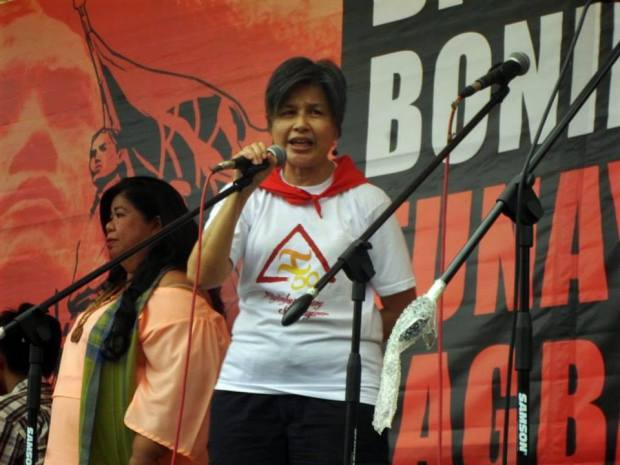Venezuela stands up to US bullying
The failed coup in Venezuela last February and US President Obama’s declaration this March that the Bolivarian Republic of Venezuela is a “national security threat” to the US have escaped most Filipinos’ notice. Understandably so, with the entire country preoccupied with another monumental blunder by the Aquino government that has cost scores of lives including elite police forces and has undermined the GPH-MILF peace negotiations.
Yet Filipinos should sit up and take notice. These recent events in Venezuela underscore hard lessons learned by the Venezuelan people and its democratically-elected government as they try to chart their nation’s destiny towards greater equity, social cohesion and national progress. In the process they find themselves continuously, systematically and violently opposed by the small but still powerful socio-economic elite with the solid backing of the US government.
Fifteen years ago, under the leadership of President Hugo Chavez, Venezuelan society underwent sweeping reforms that aimed to redistribute the revenue from its oil wealth for the benefit of the greater majority. This entailed nationalizing the oil industry and utilizing its earnings for government programs to make basic goods and services such as food, housing and education universally accessible and affordable. The Chavez leadership also pushed aggressively for genuine land reform. It capitalized on its huge popularity with the masses to build grassroots-based people’s organizations such as worker-managed cooperatives and community councils. All these galvanized the popular will behind Chavez and his reform programs.
The Chavez government prevailed over unrelenting destabilization moves by its opponents including an army coup d’état in 2002 that deposed Chavez for 48 hours, until millions of Venequelans poured into the streets to demand his release and loyal officers of the armed forces restored him to power. He ruled from then on winning a series of democratic elections until his death from illness in 2013.
The Maduro government that took over and has carried on the sweeping reforms of Chavez (dubbed the Bolivarian Revolution) has been met from day one by a new round of attacks from the US-backed right-wing forces code named “El Salida” or “The Exit”.
The elements of the plot are: 1) sabotage of the supply and distribution chain for food and other basic goods in order to induce artificial shortages and run-away inflation; 2) widespread, violent “protests” that would cause chaos in the streets; 3) systematic and sustained anti-government reportage by the elite-owned private mass media outlets beamed to global media; 4) vilification of President Maduro and his government and the projection of unrepentant coup plotters as representing the legitimate political opposition and deserving international support 5) military actions such as assassinations of government officials, bombings of government centers and false flag operations such as the assassination of some rightist leaders and deaths in violent street protests blamed on state security forces.
For two years now the government has been exerting every effort to overcome the economic sabotage measures. According to reports, while scarcities and inexplicably inflated prices are being fought back through government police action such as forcing stores to lower their prices and raiding warehouses to flush out hoarded goods, the economic warfare continues. But the disturbances have not resulted in the kind of mass unrest they were meant to incite; Venezuela’s poor hold fast to their experience of much better times under the Chavez and Maduro governments.
The so-called mass protests have died down despite the efforts of opposition leaders holding the reins of local government in rich enclaves to sustain these with sporadic thrashing of public parks and government buildings by hoodlums. The destabilizers have been trying to project the image that the Maduro government is unable to enforce basic law and order, much more, is violating its citizens’ right to freely assemble and express their grievances. But this has not been able to stick despite willful media manipulation echoed by imperialist-controlled global corporate media.
What has become more starkly clear is that the right-wing opposition is resorting to the more dangerous option of military actions up to a full blown coup d’état to bring the government down. It would appear from the account of the latest attempt in February of this year that the plan was to conduct aerial bombings of the Presidential Palace, the government media center Telesur, the Ministries of Defense, Interior and Foreign Relations, the Department of Military Intelligence and the Attorney General’s Office. The publication of a manifesto in a national newspaper calling for a transition government would be the plotters’ signal fire. There would be a call for street protests once more with intentions of fomenting wanton violence and confusion in order to portray the events as the result of government repression. A video of a detained general, a confessed coup leader in an earlier failed attempt, would be repeatedly shown to agitate members of the armed forces. Failing this, a video of men in the uniforms of the different services of the military would be shown to announce to the country and to the world that the armed forces had risen up against the Maduro government.
This plot was nipped in the bud and fell apart when a recidivist coup-plotting general was turned in by another officer he was trying to recruit. The government acted quickly to preempt any of the plotters moves. According to Mark Weisbrot (Al Jazeera), “The Venezuelan government has produced some credible evidence of a coup in the making: the recording of a former deputy minister of the interior reading what is obviously a communiqué to be issued after the military deposes the elected government, the confessions of some accused military officers and a recorded phone conversation between opposition leaders acknowledging that a coup is in the works.
The government also categorically accused the US embassy in Venezuela of direct involvement in this latest as well as previous attempts to topple it. It pointed to the “close relationship” of the political and military figures at the core of the February attempt at another putsch with US embassy officials.
After the standard US denial of any involvement, came in quick succession US President Obama’s declaration that the Venezuelan government is a “national security threat” to the US and that US sanctions would be imposed on seven Venezuelan officials. This is indeed ironical given the long history of US political interference up to armed intervention not only in Venezuela but the entire breadth of Latin American countries to remove governments not to its liking or to prop up those that are its vassal states.
Aside from being a defensive reaction to the revelation of US complicity in attempts to subvert and overthrow the Maduro government, Obama’s declaration of Venezuela being a threat to US national interest is primarily due to Venezuela’s continuing key role in building and strengthening alternative political and economic alliances among Latin American and Caribbean states such as Bolivarian Alliance for the Peoples of Our America (ALBA), Community of Latin American and Caribbean States (CELAC), Union of South American Nations (UNASUR) and Petrocaribe. These alliances further the interests of these states and their peoples more than the traditional US-initiated and dominated alliances such as Organization of American States (OAS) and the so-called “Caribbean Initiative”.
Rather than isolate Venezuela, Obama’s move to attack and isolate Venezuela is yet another futile attempt to stem the decline of US global supremacy in its own hemisphere. #
Published in Businessworld
23 March 2015



